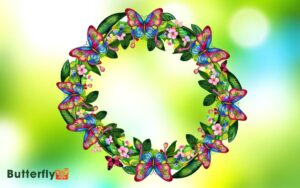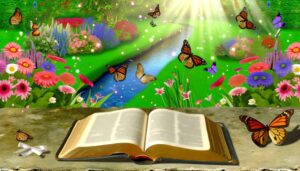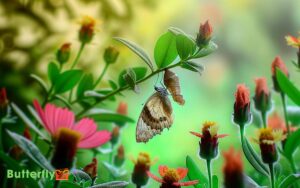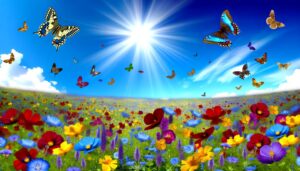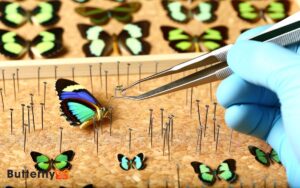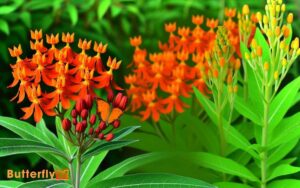Why Are Butterflies Attracted to Me?
Butterflies are attracted to individuals primarily due to visual, olfactory, and environmental cues. Bright clothing colors such as red, yellow, and pink mimic nectar-rich flowers, enticing butterflies.
Floral scents from perfumes or natural skin products release volatile organic compounds detected by butterflies' chemoreceptors, further enhancing attraction. Elevated body heat and sweat offer essential salts and minerals, resembling sunlit microenvironments.
Additionally, the unique electromagnetic energy or aura emitted by humans can influence butterfly behavior. Understanding these interconnected factors provides deeper insights into why butterflies are naturally drawn to you.
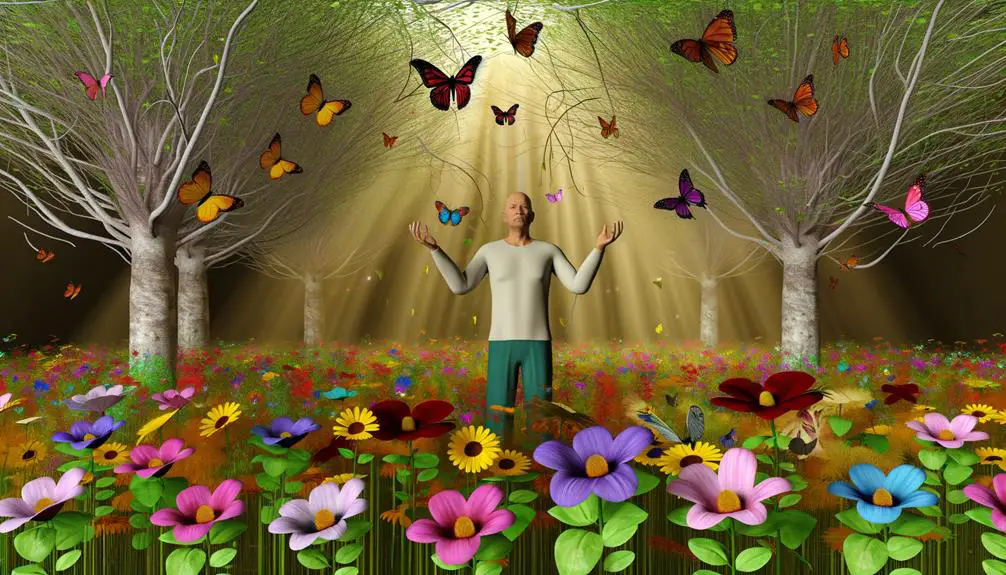
Key Takeaways
- Bright clothing colors like red, yellow, and orange mimic nectar-rich flowers, attracting butterflies.
- Floral perfumes with scents like jasmine or lavender can draw butterflies by mimicking blooming flowers.
- Elevated body heat and sweat provide essential salts and minerals that butterflies seek.
- Butterflies are drawn to calm and positive energy fields detected through their sensitive antennae.
Color of Your Clothing
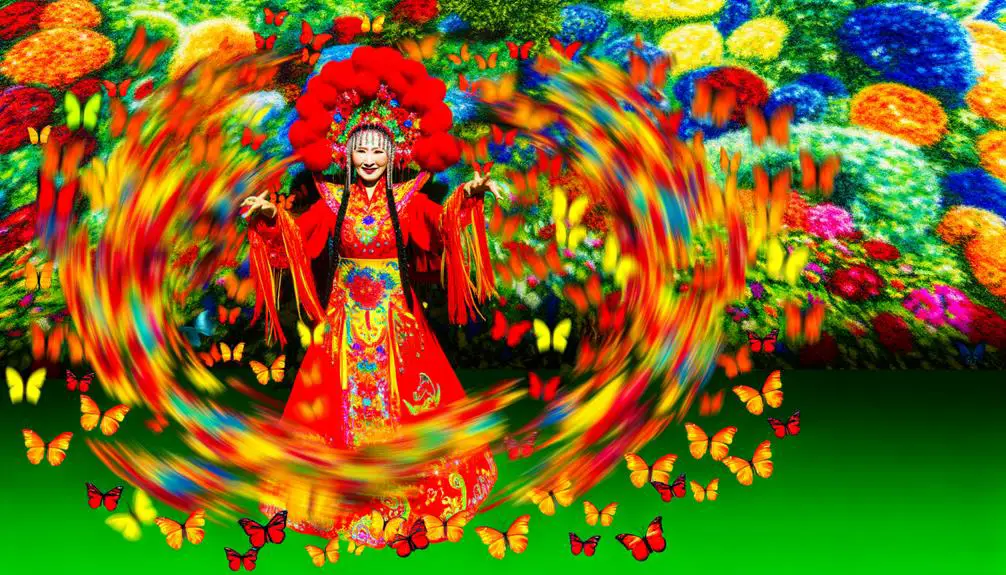
One compelling reason butterflies may be attracted to you lies in the specific colors of your clothing, as these can mimic the hues of flowers they naturally seek for nectar.
Butterflies possess a sophisticated visual system that is particularly sensitive to bright colors such as red, yellow, orange, and pink. These colors are typically indicative of flowers that provide essential resources for their survival.
When individuals wear clothing in these vibrant hues, they inadvertently create a visual signal that butterflies interpret as a potential food source.
Studies have shown that butterflies are more likely to approach and investigate objects that exhibit these floral-like colors, illustrating the importance of color perception in their foraging behavior and attraction mechanisms.
Floral Scents and Perfumes
In addition to the visual allure of brightly colored clothing, the olfactory appeal of floral scents and perfumes can greatly enhance your attractiveness to butterflies.
Butterflies possess highly sensitive chemoreceptors on their antennae, allowing them to detect volatile organic compounds (VOCs) emitted by flowers. These VOCs often mimic the aromatic compounds found in many commercial perfumes and scented products.
When individuals wear fragrances containing floral notes such as jasmine, lavender, or rose, they inadvertently replicate the scent profile of blooming flowers. This olfactory stimulation can trigger the butterflies' foraging behavior, drawing them towards the source of the scent.
Consequently, the combination of visual and olfactory signals creates an environment irresistibly appealing to these delicate pollinators.
Body Heat and Sweat
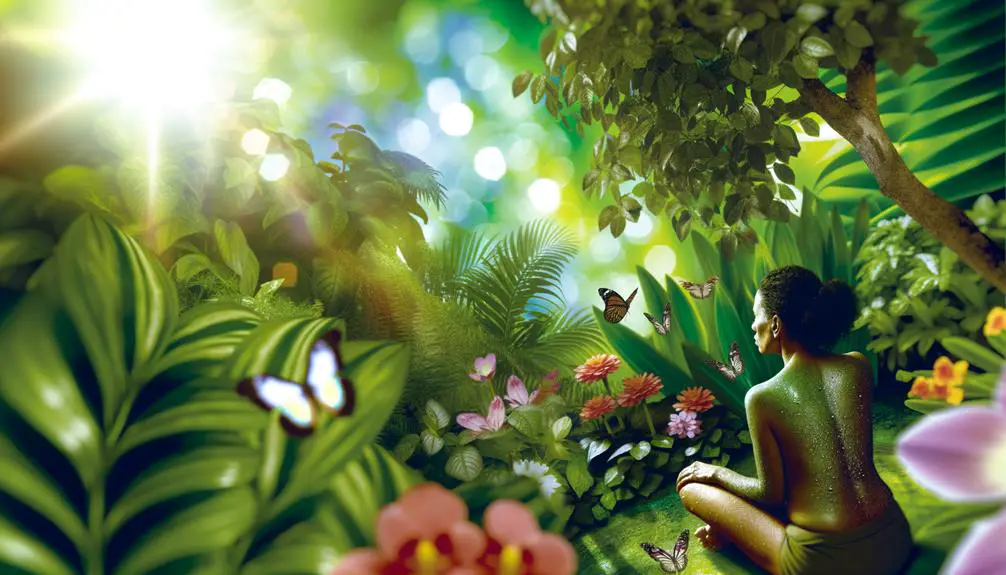
Elevated body heat and the presence of sweat play a significant role in attracting butterflies, as these factors can emit specific chemical cues and moisture levels that are highly appealing to these insects. Butterflies have chemoreceptors that detect salts and minerals in human sweat, which provide essential nutrients. Additionally, the warmth from body heat creates a microenvironment mimicking sunlit areas, making individuals more attractive resting spots. The table below highlights key factors:
| Factor | Effect on Butterflies |
|---|---|
| Elevated Body Heat | Creates favorable microclimate |
| Sweat | Source of salts and minerals |
| Moisture Levels | Hydration and nutrient source |
Understanding these interactions elucidates why butterflies might be drawn to individuals, especially in warm conditions where perspiration is more prevalent.
Energy and Aura
Numerous studies have suggested that the energy and aura emitted by individuals can influence butterfly behavior and attraction.
The concept of human biofields, which encompasses electromagnetic fields and subtle energies, offers a scientific framework for understanding this phenomenon.
Butterflies, having sensitive antennae, can detect these energy variations. Researchers theorize that individuals with calmer, positive energy fields may create an environment that butterflies find soothing or safe.
Electromagnetic frequencies emitted by the human body could potentially resonate with the sensory systems of butterflies, leading to their attraction.
Additionally, certain spiritual and holistic practices, which are known to modify one's aura, may further enhance this effect.
Consequently, the interplay between human energy fields and butterfly perception warrants deeper scientific exploration.
Natural Environment
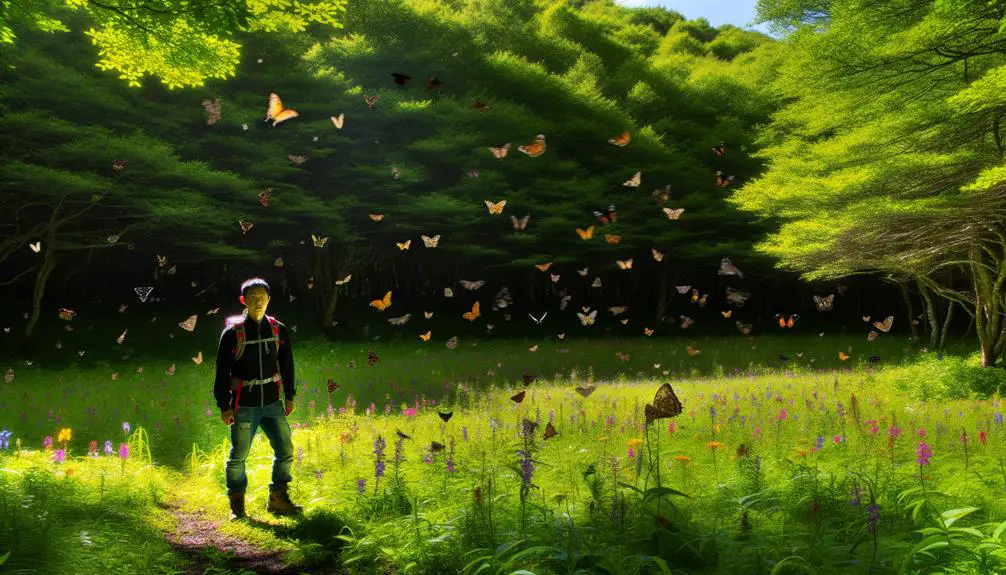
The natural environment plays a pivotal role in attracting butterflies, as specific habitat features such as diverse flora, microclimates, and the presence of water sources create conducive conditions for their presence and behavior. Butterflies are particularly drawn to areas rich in nectar-producing flowers, which serve as their primary food source. Additionally, the microclimates created by diverse plant life offer essential shelter and breeding grounds.
| Feature | Emotional Impact | Scientific Significance |
|---|---|---|
| Diverse Flora | Beauty and vibrancy | Provides nectar and habitat |
| Microclimates | Sense of tranquility | Offers shelter and breeding |
| Water Sources | Invigorating and life-giving | Essential for hydration |
Thus, a naturally rich, well-maintained environment considerably enhances the likelihood of butterfly visits, fostering both ecological balance and aesthetic pleasure. This makes it essential for gardeners and conservationists to cultivate diverse plant species that attract and sustain these delicate pollinators. Understanding butterfly visit meaning goes beyond simple admiration, as it signifies a thriving ecosystem where plants and insects coexist harmoniously. Encouraging such visits can also contribute to broader conservation efforts, ensuring the survival of various butterfly species for future generations.
Seasonal Factors
Seasonal factors play a critical role in butterfly attraction, as they influence flower bloom cycles, ambient temperature, and humidity levels, all of which are essential for butterfly survival and reproduction.
Additionally, the timing of migration patterns guarantees that butterflies are present in specific regions during ideal conditions for feeding and breeding.
Understanding these seasonal variations provides insight into why butterflies may be particularly drawn to certain individuals or locations at different times of the year.
Flower Bloom Cycles
Understanding the intricate relationship between flower bloom cycles and butterfly activity is essential for comprehending the seasonal factors that attract butterflies. Flower bloom cycles, driven by photoperiodism and climatic conditions, dictate the availability of nectar sources. Consequently, butterflies synchronize their life cycles with these bloom periods to maximize foraging efficiency.
Key factors include:
- Photoperiodism: The length of daylight influences flowering times, which in turn affects butterfly activity.
- Plant Species: Different plants bloom at varying times, attracting specific butterfly species.
Temperature and Humidity
Temperature and humidity play vital roles in determining butterfly behavior and distribution throughout different seasons. Butterflies are ectothermic, relying on external heat sources to regulate their body temperature. Ideal temperature ranges for butterfly activity typically fall between 77°F to 95°F. Additionally, humidity influences the availability of nectar and water sources, essential for their sustenance. The interplay between these factors shapes the seasonal patterns observed in butterfly populations.
| Temperature Range (°F) | Humidity Level (%) | Butterfly Activity Level |
|---|---|---|
| 50 – 60 | 30 – 50 | Low |
| 77 – 95 | 50 – 70 | High |
| 100+ | 20 – 40 | Reduced |
Understanding these elements can explain why butterflies may be more attracted to certain environments and less to others, depending on the season.
Migration Patterns Timing
Migration patterns of butterflies are intricately timed with seasonal changes, influenced by a combination of environmental cues such as photoperiod, temperature variations, and resource availability.
These factors guarantee that butterflies migrate at the most favorable time for survival and reproduction. Photoperiod, or the length of daylight, helps butterflies gauge the appropriate time for migration. Temperature variations signal the onset of different seasons, prompting butterflies to move to more favorable climates. Resource availability, including nectar and host plants, determines the suitability of a region for sustaining butterfly populations.
- Photoperiod: Changes in daylight length trigger migratory behavior.
- Temperature: Fluctuations indicate seasonal shifts.
Understanding these elements elucidates why butterflies are drawn to specific areas during migration.
Conclusion
Just as flowers bloom in response to the sun's nurturing rays, certain factors attract butterflies to individuals.
The vibrant hues of clothing, akin to petals, draw these delicate creatures. Scents and perfumes, reminiscent of floral nectar, allure their senses. Human body heat and perspiration mimic the warmth of sunlit blooms, while one's energy and aura resonate like a garden's harmony.
The natural environment and seasonal rhythms further orchestrate this dance, weaving a tapestry of attraction between humans and butterflies.

